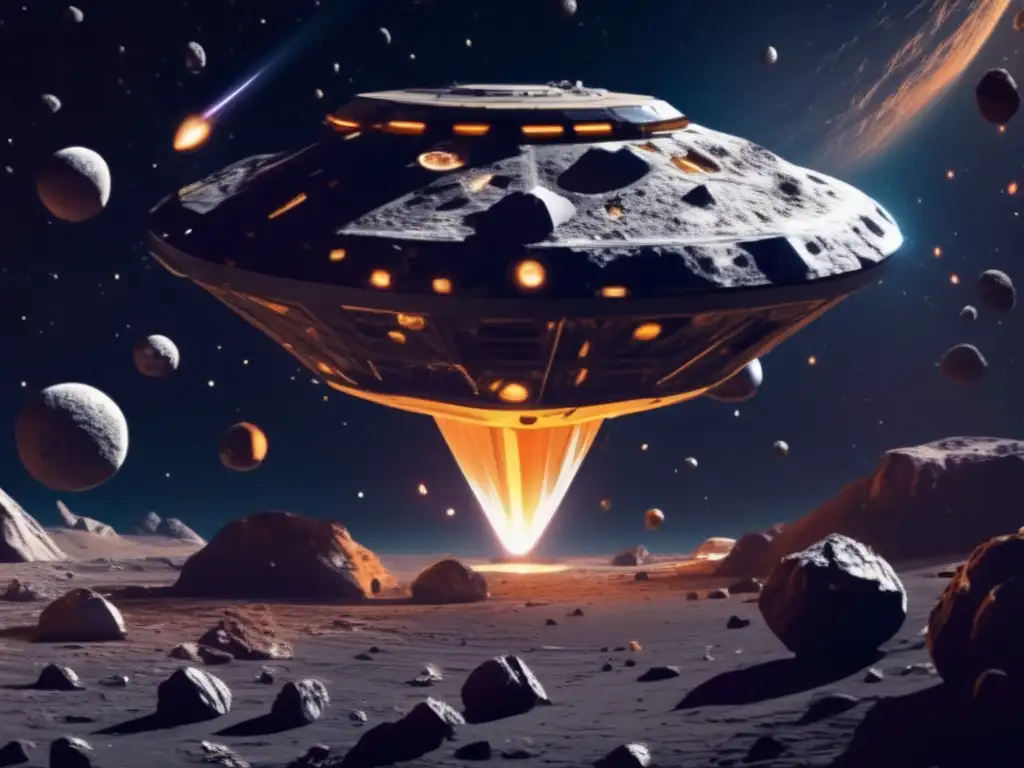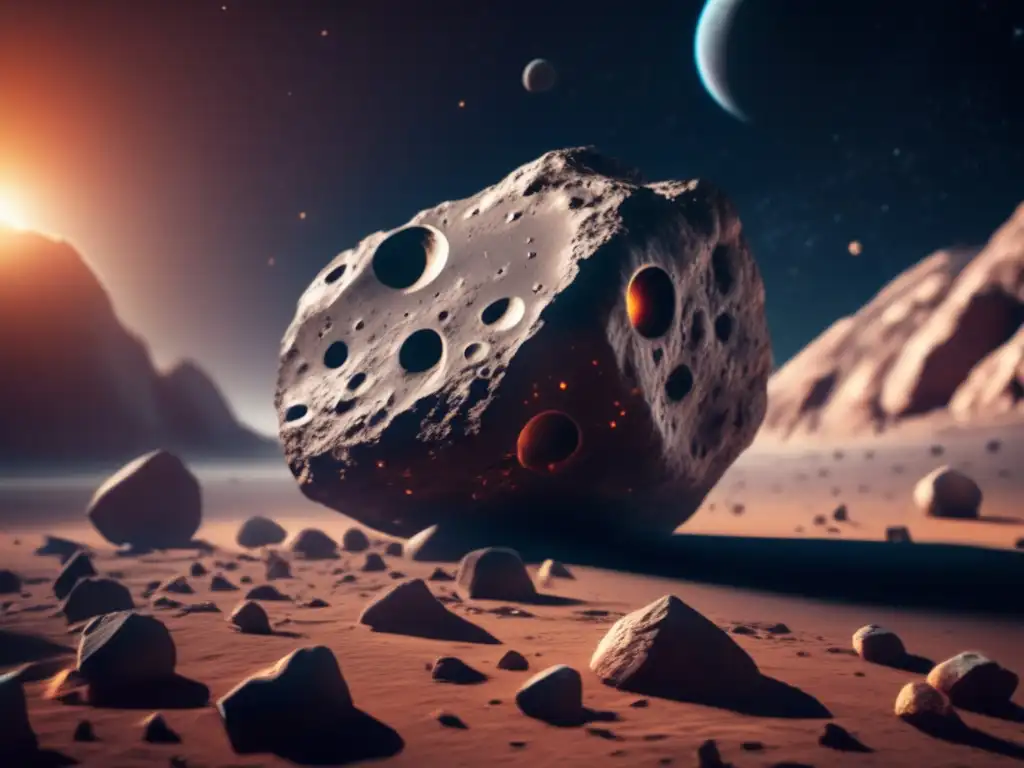How To Identify Different Types Of Asteroids Through Observation

Introduction
Asteroids are celestial objects that orbit the Sun, mainly found in the asteroid belt between Mars and Jupiter. They come in various shapes, sizes, and compositions, making them fascinating subjects for observation and study. By observing their characteristics and behaviors, astronomers can identify different types of asteroids and gain valuable insights into their origins and evolution.
Color and Reflectivity

Differentiated Asteroids
One way to identify different types of asteroids is by observing their color and reflectivity. Differentiated asteroids, which have undergone internal melting and differentiation processes, often exhibit a wide range of colors. For example, the C-type (carbonaceous) asteroids are relatively dark and reddish, while the S-type (stony) asteroids are brighter and more reflective.
Primitive Asteroids
Primitive asteroids, also known as D-type (dark) asteroids, have a low reflectivity and appear significantly darker compared to other types. Their surfaces are rich in carbon compounds and organic materials, giving them a unique blackish appearance.
Metallic Asteroids
Metallic asteroids, known as M-type asteroids, have a high reflectivity and appear brighter than most other types. These asteroids are primarily composed of metallic elements such as nickel and iron, giving them a shiny, metallic appearance.
Size and Shape

Spheroidal Asteroids
Spheroidal asteroids are nearly spherical in shape and represent some of the largest asteroids in the solar system. They have undergone sufficient gravitational forces to pull themselves into a round shape, such as the dwarf planet Ceres.
Irregular Asteroids
Irregular asteroids have irregular shapes and are often elongated or elongated. These asteroids may have been fragmented by collisions or have never possessed sufficient gravitational forces to form a spherical shape. They come in various sizes and can range from small boulders to large, jagged rocks.
Binary Asteroids
Binary asteroids consist of two asteroids orbiting each other, either in close proximity or connected through gravitational forces. These unique asteroid systems have been observed with increasing frequency and provide valuable insights into the formation and dynamics of asteroids.
Rotation and Spin Period

Fast Rotators
Fast rotators are asteroids that have short spin periods, completing a full rotation in just a few hours. Their rapid rotation can cause irregular shapes and surface features due to centrifugal forces.
Slow Rotators
Slow rotators, on the other hand, have long spin periods, taking several days or even weeks to complete a single rotation. These asteroids may have a more stable shape and exhibit fewer surface variations caused by rotation.
Tumbling Asteroids
Tumbling asteroids are objects that do not rotate consistently about a single axis but instead have complex tumbling motions. This erratic behavior is often the result of irregular shapes or asymmetric mass distributions within the asteroid.
Surface Features

Impact Craters
One of the most common surface features observed on asteroids are impact craters. These are formed when smaller asteroids or fragments collide with the larger asteroid, leaving behind distinctive circular depressions on the surface.
Regolith and Boulders
Regolith, a loose layer of rocky material covering the surface of asteroids, can provide valuable information about the asteroid's composition and age. Additionally, the presence of boulders or rocky outcrops may indicate the remnants of past or ongoing geological processes.
Surface Color Variations
By observing color variations across the surface of an asteroid, astronomers can gather insight into its mineral composition and potential geological activity. These color variations can be caused by different types of rocks, minerals, or even organic compounds.
Frequently Asked Questions

-
How can I determine the composition of an asteroid?
Observing the asteroid's color and reflectivity can provide valuable clues about its composition. Dark and reddish asteroids are often carbonaceous (C-type), while brighter and more reflective ones are stony (S-type). Metallic asteroids have a shiny appearance.
-
What is the significance of irregularly shaped asteroids?
Irregularly shaped asteroids can reveal information about their internal structure and formation processes. They may result from collisions or lack gravitational forces to form a spherical shape.
-
Why do some asteroids rotate rapidly?
Fast rotation can be caused by irregular shapes or asymmetric mass distributions within the asteroid. Centrifugal forces generated by rapid rotation can lead to surface irregularities.
-
What are some surface features commonly observed on asteroids?
Impact craters, regolith layers, and boulders are among the surface features commonly observed on asteroids. Color variations across the surface can also provide important clues about their composition.
-
How can binary asteroids further our understanding of asteroids?
Binary asteroids provide insights into the formation processes and the dynamics of asteroids. Studying their orbital characteristics and interactions helps researchers better understand the origin and evolution of these celestial objects.
Conclusion
By carefully observing various characteristics of asteroids, such as color, shape, rotation, and surface features, astronomers can identify different types of asteroids and gain valuable knowledge about their composition, origins, and evolutionary history. Continuing observations and studies of asteroids contribute to expanding our understanding of the solar system and the universe at large. So, grab your telescope and explore the captivating world of asteroids!
Encourage the reader to share their thoughts in the comments section and to positively interact with www.asteroidrealm.com, whether by subscribing, sharing the article on social networks, or other forms of participation. Thank the reader for their time and attention.
Additional Resources

For further information about asteroids and related topics, please check out the following resources:
- Asteroid Realm - A comprehensive website dedicated to asteroids and their fascinating world.
- NASA Asteroids - NASA's official website providing extensive information about asteroids, including research, missions, and news updates.
- International Astronomical Union (IAU) - Asteroids - The IAU's page dedicated to asteroids, covering everything from classification to exploration.
 Visual Aids To Improve Your Asteroid Hunting Skills
Visual Aids To Improve Your Asteroid Hunting Skills Tips And Tricks To Prevent Telescope Condensation During Asteroid Observation
Tips And Tricks To Prevent Telescope Condensation During Asteroid Observation How To Clean And Maintain Your Telescope For Asteroid Observation
How To Clean And Maintain Your Telescope For Asteroid ObservationIf you want to discover more articles similar to How To Identify Different Types Of Asteroids Through Observation, you can visit the Telescopes and Asteroid Observation category.
Leave a Reply

Articulos relacionados: